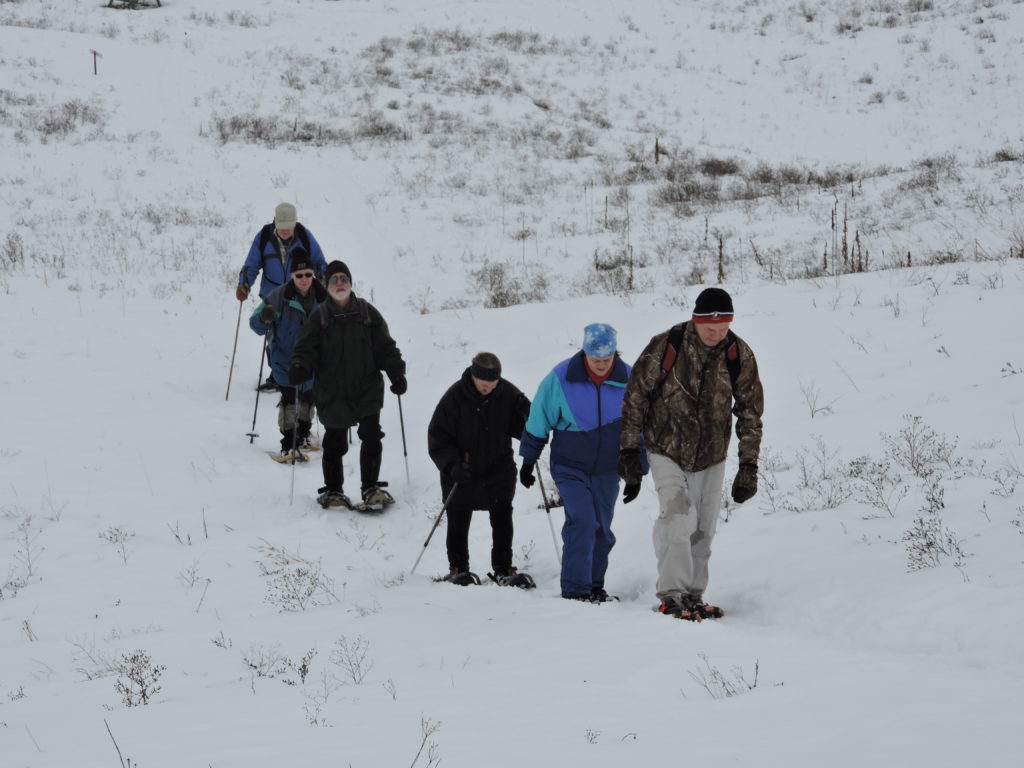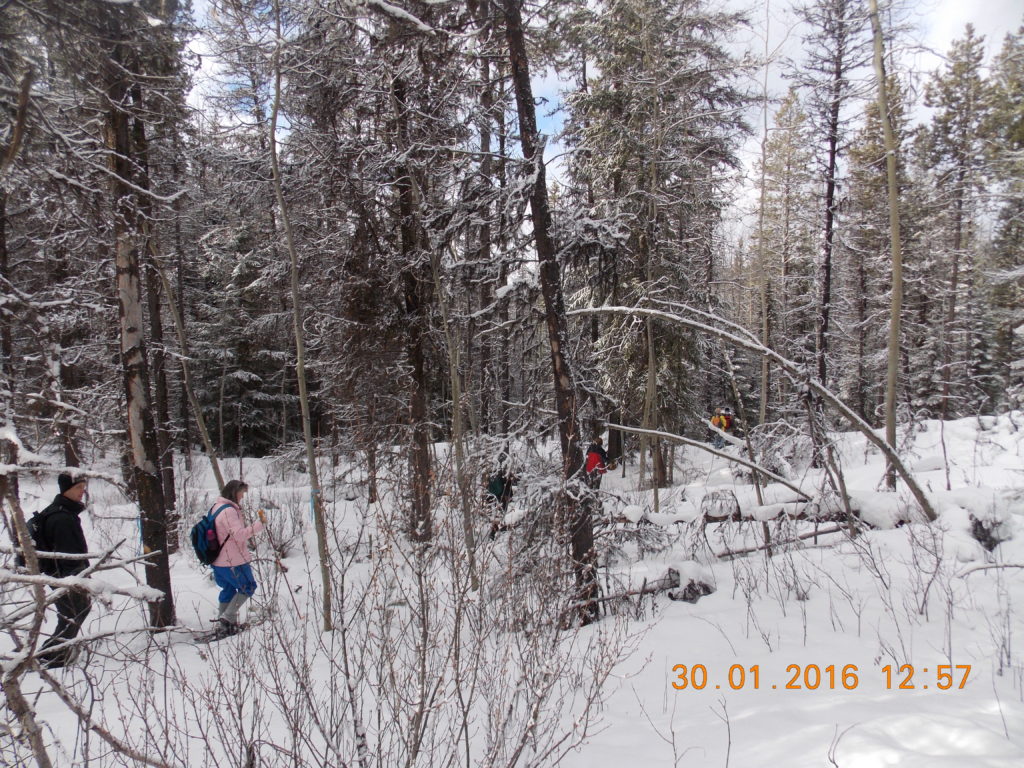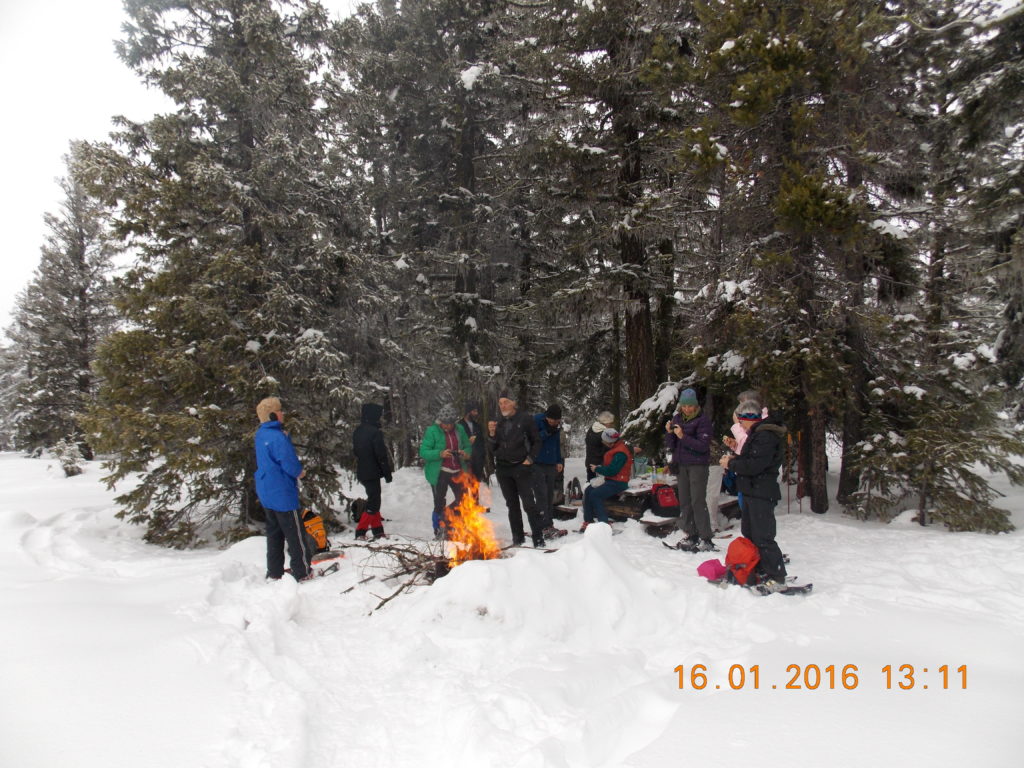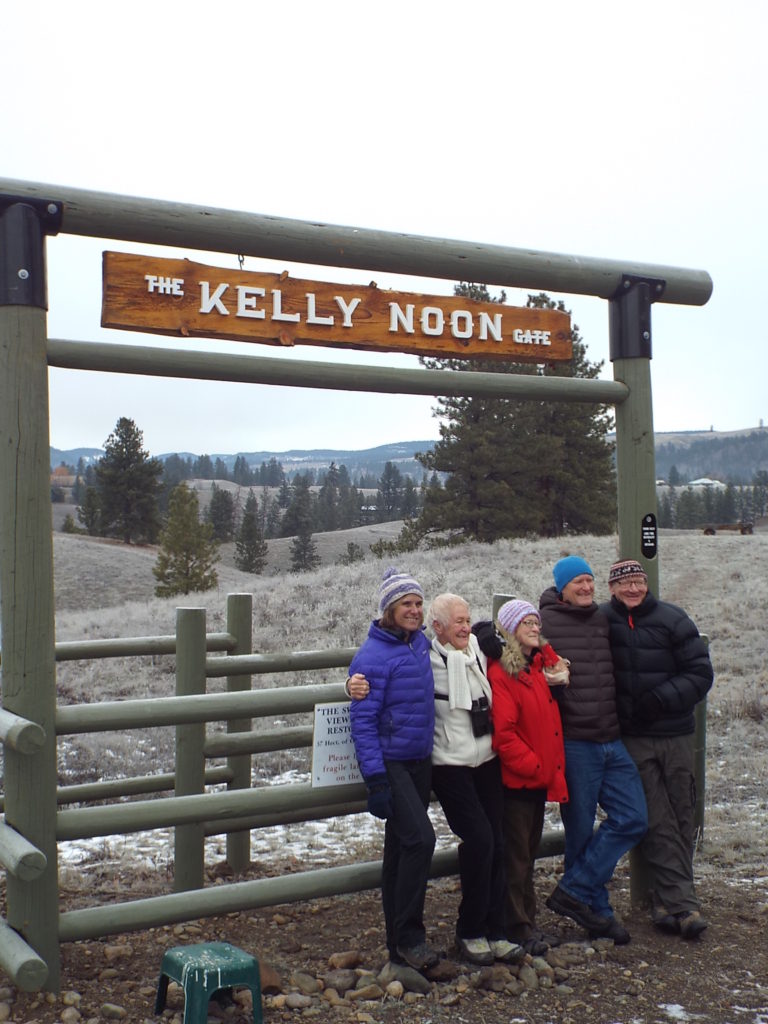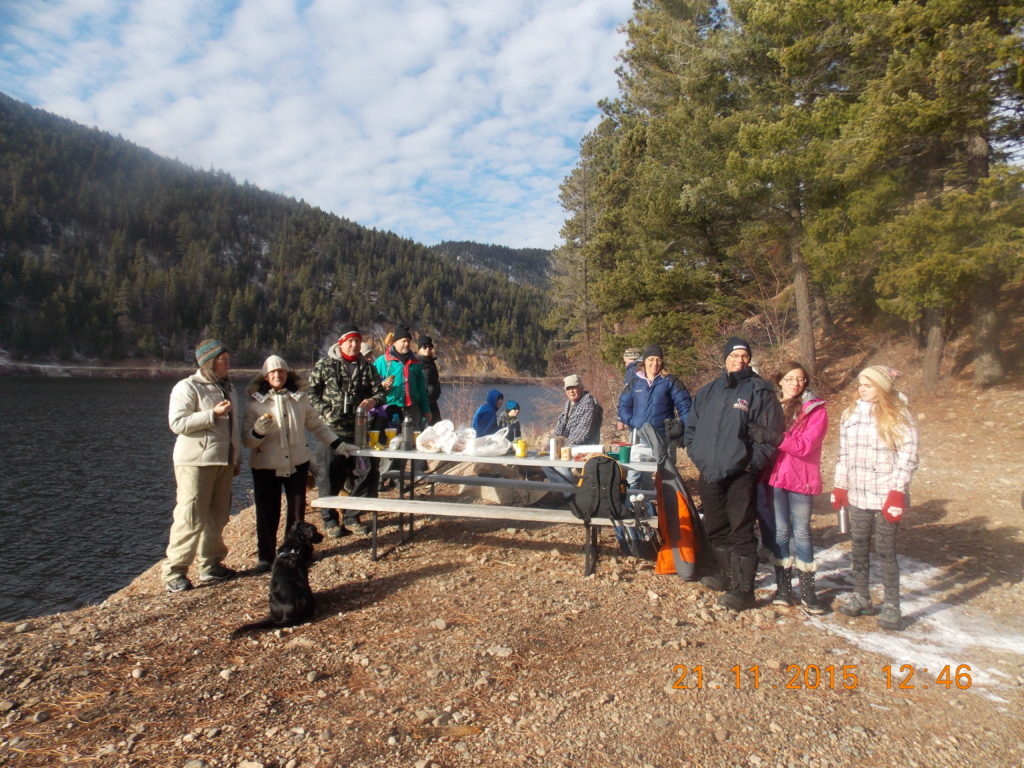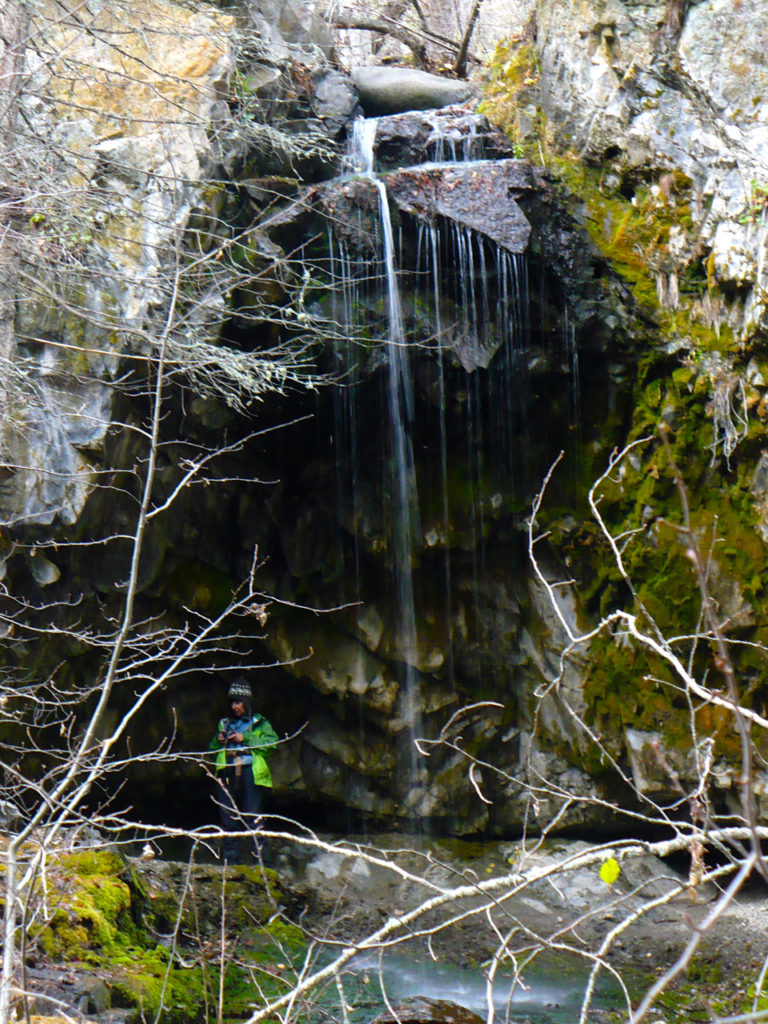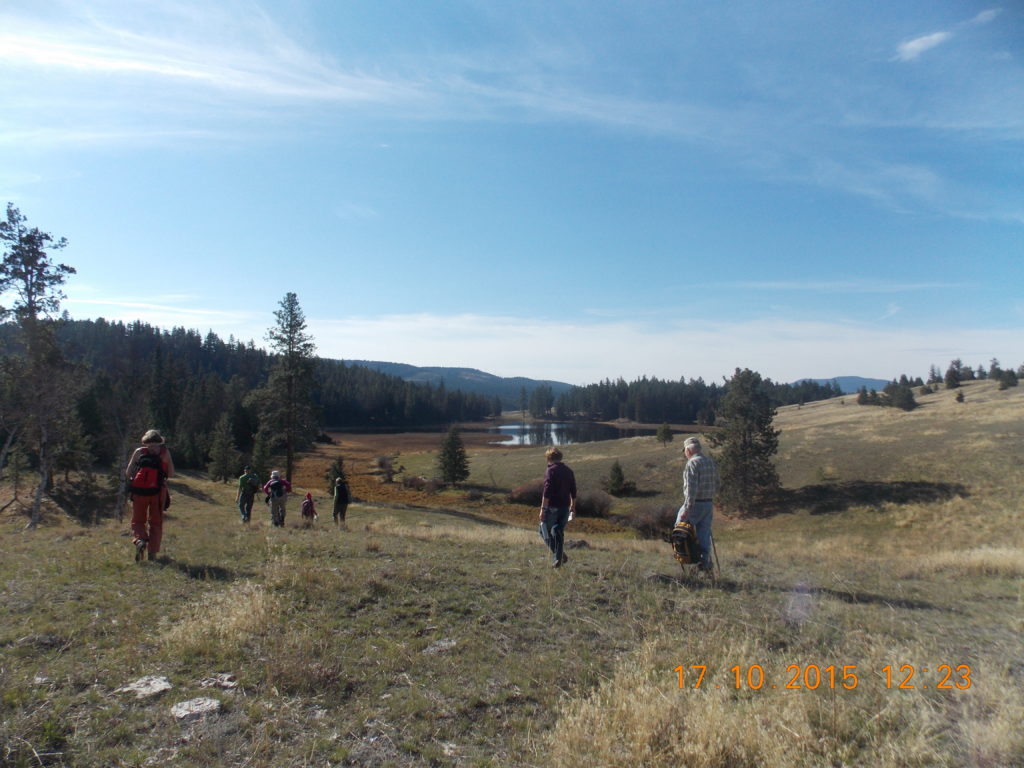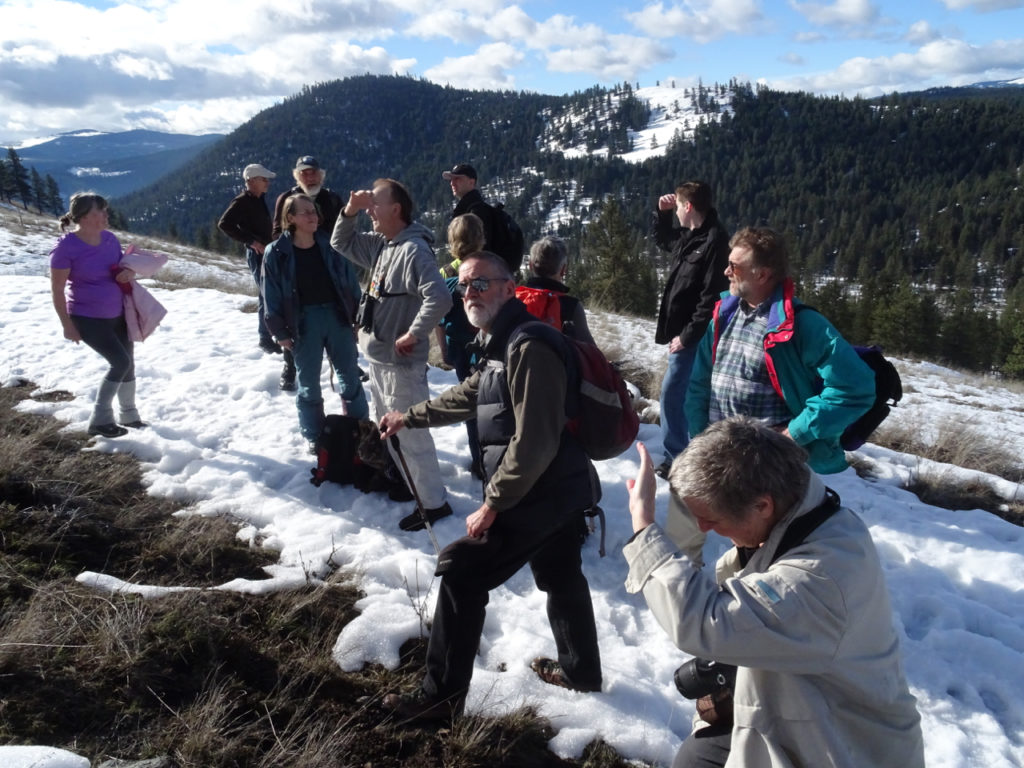
It was a spectacular sunny day, Saturday Feb. 28th at August Lake, as 13 naturalists set out on their outing. It was decided earlier that snowshoes would not be needed as much of the snow was gone, but poles were advised for the icy sections that we would encounter. We took a small logging road south of August Lake and began climbing to reach our destination of Rock Ridge Knoll, a name invented for this outing, but locally known as Little Darcy Mountain. Along the way John Henry gave us a short explanation of timber cruising as we passed a “growth and yield” station. As we walked across the sunny side hills John pointed out that the terrain we were viewing, i.e. the side hills, were left as boulder clay remnants from the end of glaciation. Along the way we came upon an outcropping of rocks containing copper. It was a lovely sight to see all the green and bluey green specimens glistening in the mid morning sun. As we crisscrossed the hills to reach the top, there was plentiful evidence of elk tracks and droppings. Unfortunately, we didn’t see any elk, but a herd of 25 was sighted earlier in the week. All around us we were surrounded by beautiful vistas of snow covered hills or just bared hills. We reached the first knoll, and from out vantage position, we could see the buildings of Rock Ridge and the frozen Lorne Lake below. We meandered across a snow covered hill to reach a second knoll equally spectacular as the first and settled down for lunch. Our return trip took us through an open forest to join an old logging trail, and we carefully made our way down to August Lake.

